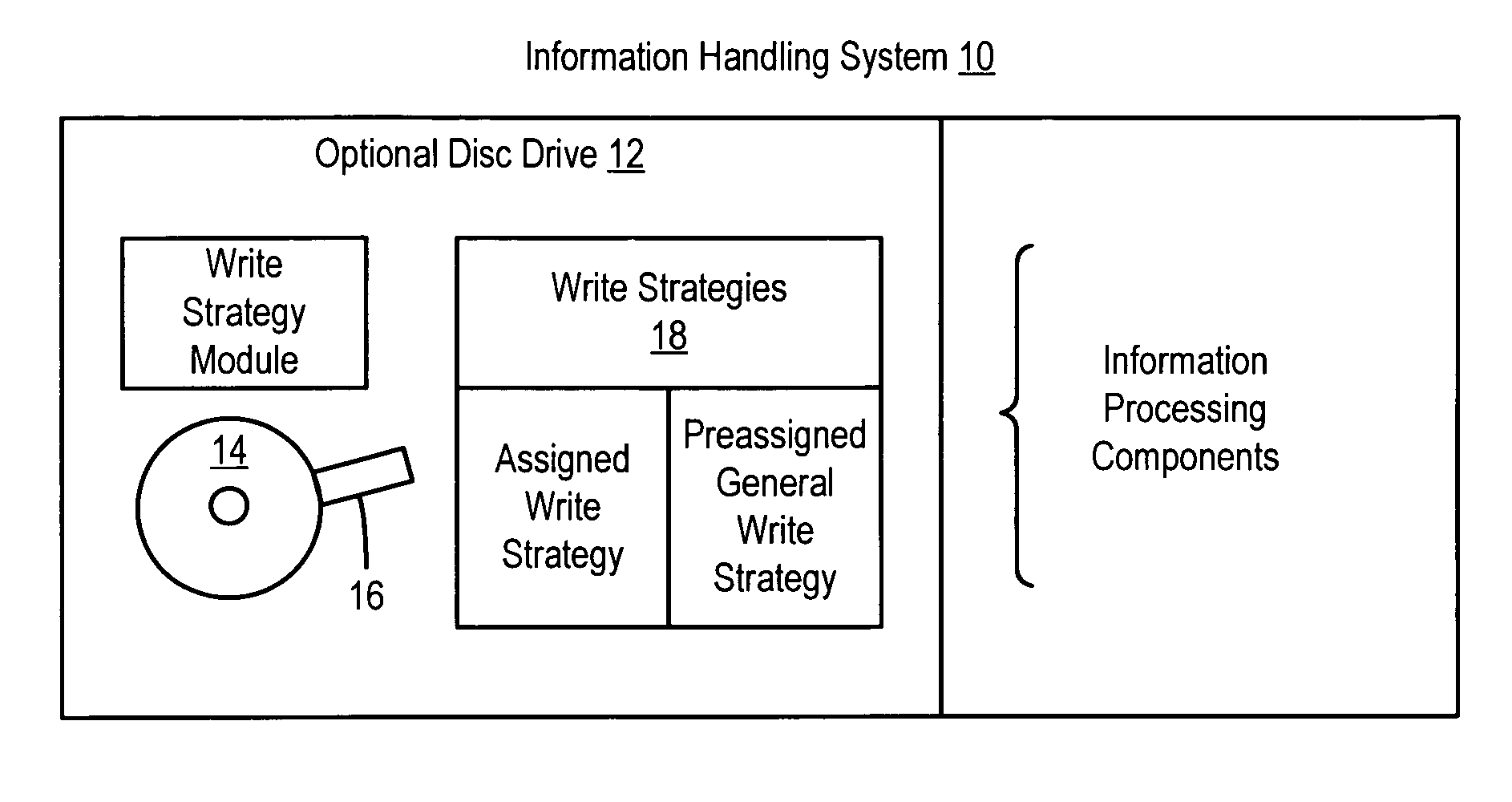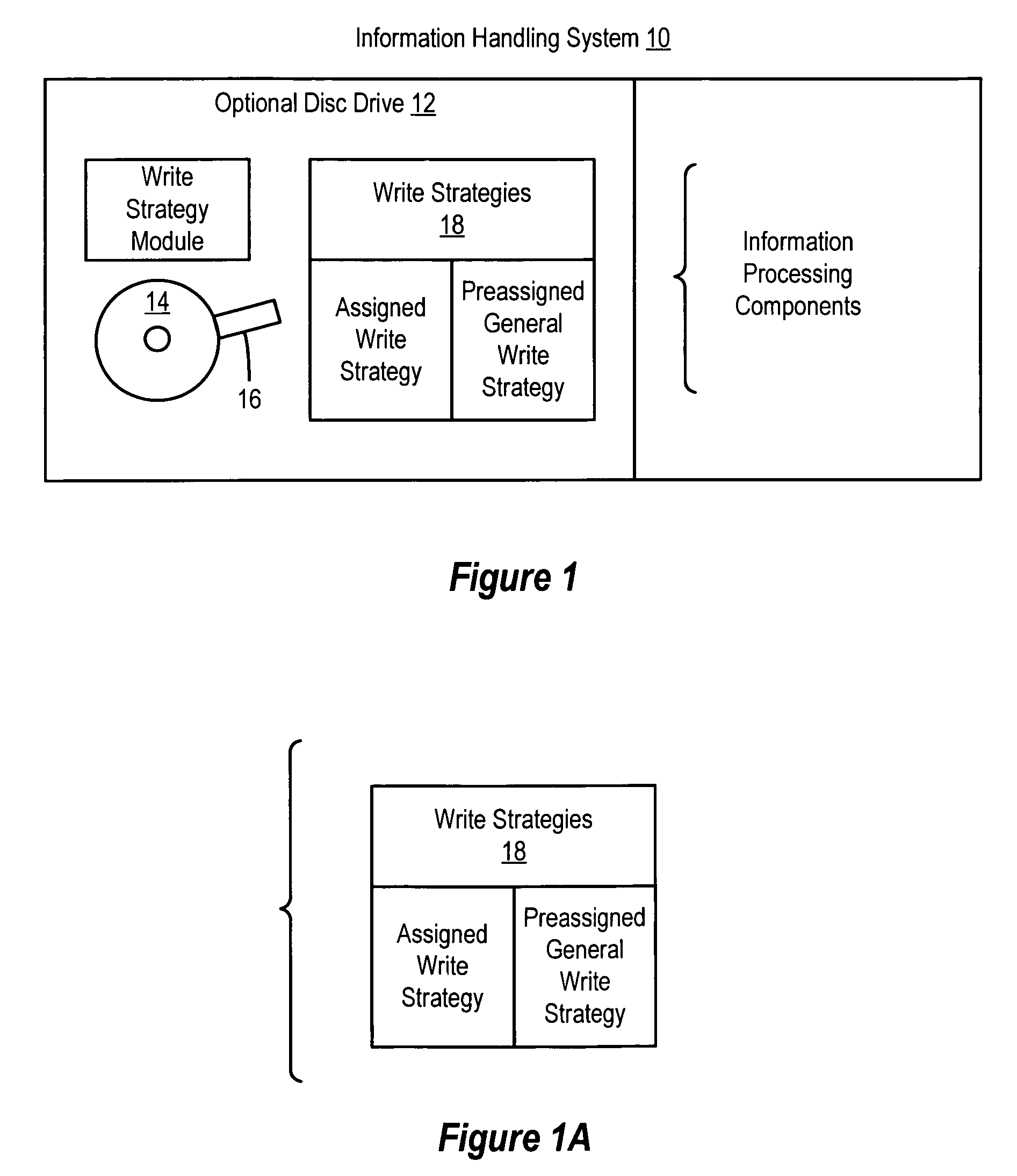Method and system for setting optical drive write speed
a technology of optical drives and write speeds, applied in the field of information handling system optical drive operation, can solve the problems of overly conservative use of slow write speeds with unrecognized embedded codes, optical drives may read embedded codes, and achieve greater speeds, increased user satisfaction, and greater speed
- Summary
- Abstract
- Description
- Claims
- Application Information
AI Technical Summary
Benefits of technology
Problems solved by technology
Method used
Image
Examples
Embodiment Construction
[0014]An optical disc drive stores information generated by an information handling system onto an optical medium for which the disc drive lacked a write strategy at its manufacture by recognizing an identification code of the optical medium as a preassigned identification code. Information from the information handling system is written to the optical medium with a general write strategy associated with the preassigned identification code and developed based on design parameters of an optical medium planned at the time of manufacture of the disc drive. For purposes of this application, an information handling system may include any instrumentality or aggregate of instrumentalities operable to compute, classify, process, transmit, receive, retrieve, originate, switch, store, display, manifest, detect, record, reproduce, handle, or utilize any form of information, intelligence, or data for business, scientific, control, or other purposes. For example, an information handling system m...
PUM
| Property | Measurement | Unit |
|---|---|---|
| write speed | aaaaa | aaaaa |
| speed | aaaaa | aaaaa |
| reflection | aaaaa | aaaaa |
Abstract
Description
Claims
Application Information
 Login to View More
Login to View More - R&D
- Intellectual Property
- Life Sciences
- Materials
- Tech Scout
- Unparalleled Data Quality
- Higher Quality Content
- 60% Fewer Hallucinations
Browse by: Latest US Patents, China's latest patents, Technical Efficacy Thesaurus, Application Domain, Technology Topic, Popular Technical Reports.
© 2025 PatSnap. All rights reserved.Legal|Privacy policy|Modern Slavery Act Transparency Statement|Sitemap|About US| Contact US: help@patsnap.com



